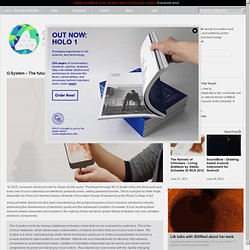

Essay: 21st Century Gestures Clip Art Collection. 21st Century Gestures Clip Art Collection 1. A text file For some years I’ve been collating a list in a text file, which has the banal filename “21st_century_gestures.txt”. These are a set of gestures, spatial patterns and physical, often bodily, interactions that seemed to me to be entirely novel. They all concern our interactions with The Network, and reflect how a particular Networked development, and its affordances, actually results in intriguing physical interactions. For a while, I have been “a camera with its shutter open, quite passive, recording, not thinking”, simply compiling the list. It turned out that Nicolas Nova and collaborators were pursuing a similar idea and asked, by chance, if I might write something about their project.
Rewriting the brief somewhat, I have instead used this essay to put my list to bed. I drew sketches of the library users co-opting the spaces and objects, ascribing a name to each type as if they were yoga positions. Size S Size M Size L 2. 3. 4. 5. From M2M to The Internet of Things: Viewpoints From Europe. As I mentioned a few weeks ago, Rogers CEO Nadir Mohamed was featured in The National Post and believes in a future of machine-to-machine technology as a massive revenue generator over the next three to five years, much like the rest of the telecom industry. M2M is loosely defined in my opinion as just one aspect of the Internet of Things as it is computers communicating with one another to perform tasks at hand, just as we use computers to communicate socially with one another, while another side is “smart objects” communicating with various forms of mobile media to devices and with each other.
I touched on this some months ago that mobile media was enabling product or object media to occur. IBM, in a 2009 video, shortly after they announced their ambitious vision to create a smarter planet said that 66% of products developed in the last year included embedded information technology. Kroes continues in saying: “The IoT requires a new way of thinking about technology. Dr. PICNIC ’08: The Visible City session. Wednesday Sept. 24 I went to one of the sessions at PICNIC ’08 called “The Visible City”. This session was about ways of visualizing mobility patterns in the city. From the announcement: What if an entire city could be visible from above, like we see it from an airplane? Not simply buildings and squares, but also the aggregation of people who populate it, outdoor as well as indoor. We could detect public gatherings and traffic jams, estimate which neighborhoods are most crowded, reconstruct commuting patterns during the day. Assaf Biderman, assistant director of the Senseable City Lab of MIT Boston, showed a number of projects.
The second talk by host Euro Beinat – Director Sensible Future Foundation & University of Salzburg – was about the project currentcity.org. (img source: currentcity.org) After this presentation I posed the question “where are the people?” The final talk by Lorenzo de Rita – Founder and Chief Scientist of The Soon Institute (what, no website?) O.System - The future of personal electronics - RCA IDE. “In 2025, consumer electronics will no longer be the same.”

Purchased through the O.System they will allow each and every one of us to customise our electronic products online, adding personal touches. This is a project by Peter Krige, Alexander du Preez and Hannes Harms, students of Innovation Design Engineering at the Royal College of Art. Using printable electronics and rapid manufacturing, the project proposes a local consumer electronics industry addressing the obsolescence of electronic goods and the subsequent problem of e-waste. It is an exciting future scenario where consumers are involved in the making of their electronic goods thanks to flexible, low cost, printable electronic components. The O.system works by having a database of designs online that can be accessed by customers. The sound system prototype pictured here has been made using selective laser sintering in nylon and its design has been optimized to minimize material and also allow for updating.
Yochai Benkler on the new open-source economics. Top 7 Websites for Creating the Future City. Resources. Spacehive. Neighborland. Give a Minute!